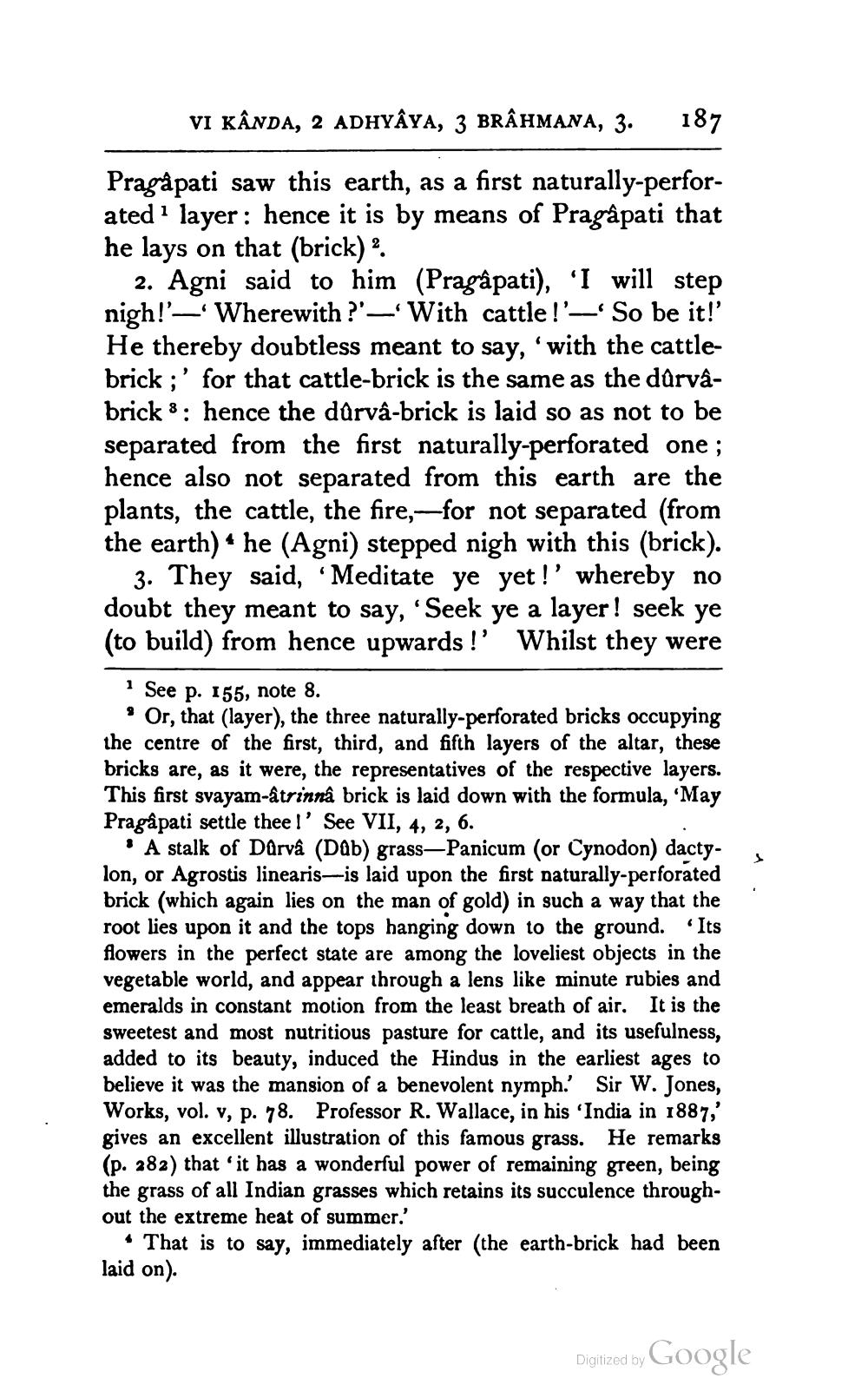________________
VI KANDA, 2 ADHYAYA, 3 BRAHMANA, 3.
187
Pragàpati saw this earth, as a first naturally-perforated 1 layer : hence it is by means of Pragâpati that he lays on that (brick) 2.
2. Agni said to him (Pragâpati), 'I will step nigh!'-—'Wherewith ?' — With cattle !'—'So be it!' He thereby doubtless meant to say, 'with the cattlebrick ;' for that cattle-brick is the same as the dûrvabrick 8: hence the darva-brick is laid so as not to be separated from the first naturally-perforated one ; hence also not separated from this earth are the plants, the cattle, the fire,--for not separated (from the earth) * he (Agni) stepped nigh with this (brick).
3. They said, 'Meditate ye yet!' whereby no doubt they meant to say, 'Seek ye a layer ! seek ye (to build) from hence upwards !' Whilst they were
* See p. 155, note 8.
• Or, that (layer), the three naturally-perforated bricks occupying the centre of the first, third, and fifth layers of the altar, these bricks are, as it were, the representatives of the respective layer This first svayam-atrinnâ brick is laid down with the formula, May Pragàpati settle thee!' See VII, 4, 2, 6.
• A stalk of Darvâ (Dab) grass—Panicum (or Cynodon) dactylon, or Agrostis linearis-is laid upon the first naturally-perforated brick (which again lies on the man of gold) in such a way that the root lies upon it and the tops hanging down to the ground. Its flowers in the perfect state are among the loveliest objects in the vegetable world, and appear through a lens like minute rubies and emeralds in constant motion from the least breath of air. It is the sweetest and most nutritious pasture for cattle, and its usefulness, added to its beauty, induced the Hindus in the earliest ages to believe it was the mansion of a benevolent nymph. Sir W. Jones, Works, vol. v, p. 78. Professor R. Wallace, in his 'India in 1887,' gives an excellent illustration of this famous grass. He remarks (p. 282) that it has a wonderful power of remaining green, being the grass of all Indian grasses which retains its succulence throughout the extreme heat of summer.'
• That is to say, immediately after the earth-brick had been laid on).
Digitized by Google




